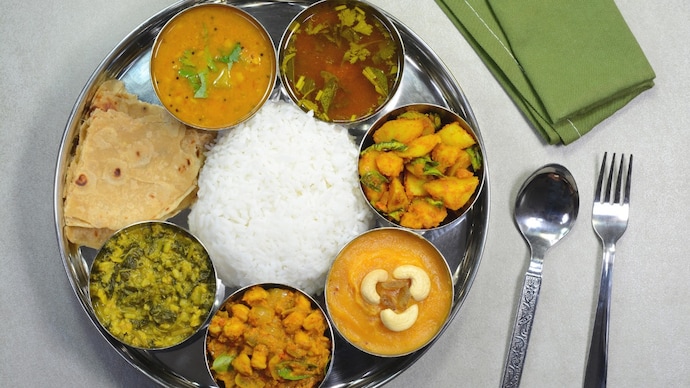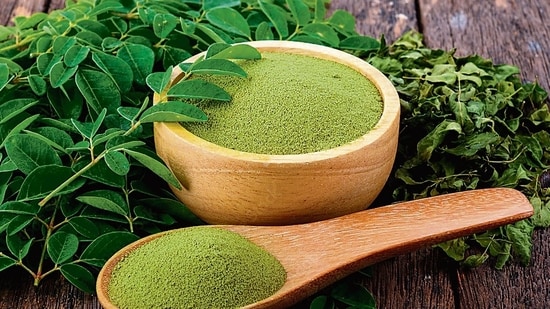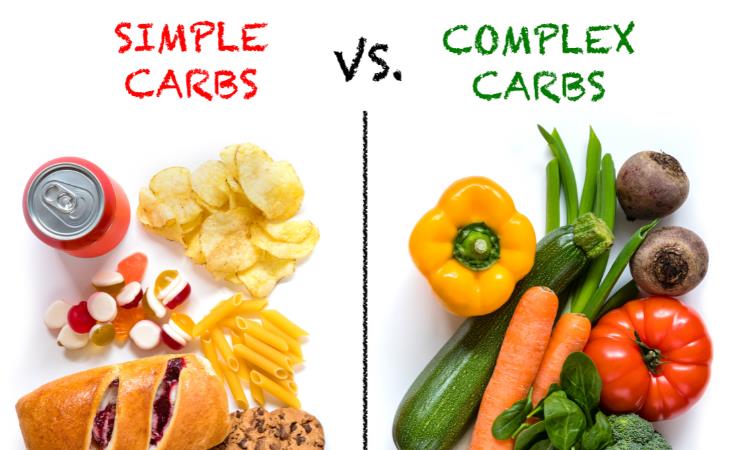
When the Indian Council of Medical Research (ICMR) released the
latest findings from its nationwide India Diabetes (ICMR-INDIAB) survey,
the results painted a sobering picture of how India eats and why the
country is witnessing a surge in diabetes, obesity, and metabolic
disorders.
The study, which analysed, the diets of over 18,000 adults across all regions of India, found that
more than 62% of daily calories in the average Indian diet come from
low-quality carbohydrates such as white rice, milled wheat, and added
sugars.
Combined with high saturated fat intake and low protein consumption,
this dietary imbalance has become a potent recipe for disease.
Those with the highest carbohydrate consumption were found to have a
30% higher risk of developing newly diagnosed type 2 diabetes, 20%
higher risk of prediabetes, and a 22% higher risk of general obesity
compared to those consuming the least carbohydrates.
But the most
striking finding is this: even replacing white rice with whole wheat or
millet flours did not lower the risk of diabetes or abdominal obesity.
What
researchers want to stress is that reducing total carbohydrate
quantity, not merely switching grains, is what really matters.
KEY HIGHLIGHTS FROM THE ICMR-INDIAB DIETARY STUDY
- 62.3% of total energy in Indian diets comes from low-quality carbohydrates (refined cereals and sugars).
- High-carb diets increase risk of type 2 diabetes by up to 30%, prediabetes by 20%, and obesity by 22%.
- Replacing refined carbs with milled whole grains (wheat or millet flour) offered no benefit.
- Substituting
5% of carb calories with protein (from dairy, pulses, eggs, or fish)
significantly reduced diabetes and prediabetes risk. - Protein
intake in India is low — only 12% of total energy — with most coming
from plant sources, and very little from dairy or animal protein.
‘REDUCE TOTAL CARBS, NOT JUST CHANGE THE GRAIN’
“Two big messages emerge from this study,” Dr. Sudha Vasudevan,
Senior Scientist and Head of the Department of Foods, Nutrition and
Dietetics Research at the Madras Diabetes Research Foundation tells
IndiaToday.in. “First, irrespective of the grain type, total
carbohydrates need to reduce. Second, replacing white rice with milled
whole grains like wheat or millet flour offers no benefit.”
The
reason, she explains, lies in the food matrix. “Whole grains must be
consumed intact. Once they are milled into fine flours, their glycemic
index increases, making the body’s response similar to that of refined
white rice. Milling breaks down the grain structure, causing blood sugar
to spike faster,” she adds.
This insight challenges the long-held assumption that switching from
polished rice to “whole wheat” automatically improves diet quality.
In
India, most “whole grains” are consumed as finely milled atta or ragi
flour not as intact grains like brown rice or whole millets, reducing
their health advantage.
THE PROTEIN GAP: INDIA NEEDS TO REBALANCE ITS PLATE
The study highlights that protein intake across India remains low,
averaging only 12% of daily calories, well below the global
recommendation of 15–20%. Most of this comes from plant sources, with
minimal intake of dairy, eggs, and fish.
Dr. R.M. Anjana, Managing
Director of Dr. Mohan’s Diabetes Specialities Centre and President of
the Madras Diabetes Research Foundation and lead author of the study,
says that a small but strategic dietary tweak can have a significant
impact on metabolic health.
“Replacing carbohydrate calories with
protein calories doesn’t mean eating red meat. It means increasing
plant, dairy, egg, and fish proteins, all of which are rich in
micronutrients and dietary fibre, and have lower glycemic indices,” she
explains.

The isocaloric substitution modelling in the study, which showed that
replacing just 5% of carb calories with protein reduced diabetes and
prediabetes risk, demonstrates that even small changes in dietary
composition can lead to measurable benefits.
“Foods like pulses, legumes, and dairy help lower the overall
glycemic load of meals. They also increase satiety, which means people
eat less frequently and are less prone to overeating refined foods,” Dr.
Anjana tells IndiaToday.in.
DESIGNING A HEALTHIER INDIAN PLATE
The ICMR findings call for a rethinking of what an “ideal Indian meal” should look like.
“The goal is not to eliminate staples but to rebalance the plate,” says Dr. Vasudevan.
For
instance, if a South Indian plate typically has four idlis, reduce it
to three and add one more bowl of sambar or dhal. For a North Indian
meal with two aloo parathas, cut down to one and increase the portions
of curd and dal fry, she says.
This principle: reducing cereal
portion size while increasing protein-rich accompaniments can be applied
to most traditional diets across regions without changing their
cultural essence.
“Every region’s plate, whether rice-based in the
South or wheat-based in the North, can follow this model: fewer refined
carbohydrates, and more pulses, legumes, milk, eggs, or fish,” she
notes.
A ONE-INDIA FOOD STRATEGY WITH REGIONAL SENSITIVITY
India’s diverse culinary map makes any “national food plate” a challenge. However, the nutritional problem is surprisingly uniform.
“Whether it’s rice, wheat, or millets, all are high in carbohydrates,” says Dr. Vasudevan. “So the big picture message is the same — reduce cereal quantity and increase protein foods. All regions can benefit from this guidance.”
Still, regional adaptations matter. Northeastern states, for example, have the highest protein intakes (up to 13.6% of energy, mostly from fish and red meat), while northern and eastern states rely more heavily on dairy or plant protein.
A national dietary framework, therefore, should retain cultural diversity while promoting common nutritional goals: fewer carbohydrates, moderate fat, and more protein.
THE AFFORDABILITY AND ACCESS CHALLENGE
Shifting diets, however, cannot be achieved without addressing the economic and food-access barriers. Pulses and dairy products, though nutritionally beneficial, are not equally affordable or available across states.
“Affordability plays a big role in food choices,” says Dr. Anjana. “That’s why the study does not suggest an overhaul of diets but small, feasible tweaks — such as reducing cereal portions and increasing protein foods like pulses and dairy.”

She emphasizes that policy-level support is critical. “Public
distribution systems could subsidize pulses and healthier oils instead
of only low-quality carbohydrates like white rice. This would help both
urban and rural populations make healthier choices without increasing
their food budget,” she suggests.
AVOIDING UNINTENDED CONSEQUENCES
One
concern with encouraging protein substitution is whether it might
inadvertently increase saturated fat intake, particularly from dairy, or
create cost or environmental pressures.
Dr. Vasudevan addresses
this directly: “The study recommends moderation. The focus is on plant
and low-fat dairy proteins, not red meat or full-fat dairy. Pulses and
legumes, for example, are both cost-effective and environmentally
sustainable sources of protein.”
India’s policy framework, she
says, should promote “right nutrition investments” that align health,
affordability, and sustainability — a strategy that benefits both
individual health and national disease burden.
CHANGING HABITS, ONE PLATE AT A TIME
Despite
the data, the biggest challenge may be behavioural. Cutting down on
rice or rotis, deeply tied to comfort and culture, is easier said than
done.
“The plate will still contain our familiar foods,” says Dr.
Anjana reassuringly. “We’re not asking people to abandon cultural
dishes. The key is portion balance — slightly reducing cereal quantity
and proportionately increasing protein choices like dal, curd, eggs, or
fish.”
Higher protein meals, she adds, “keep you full longer, prevent blood
sugar spikes, and reduce frequent hunger — which refined carbs tend to
trigger.”
As India confronts a growing epidemic of lifestyle
diseases, the message from the study is clear: it’s not just what we
eat, but how much and how balanced our plates are.










